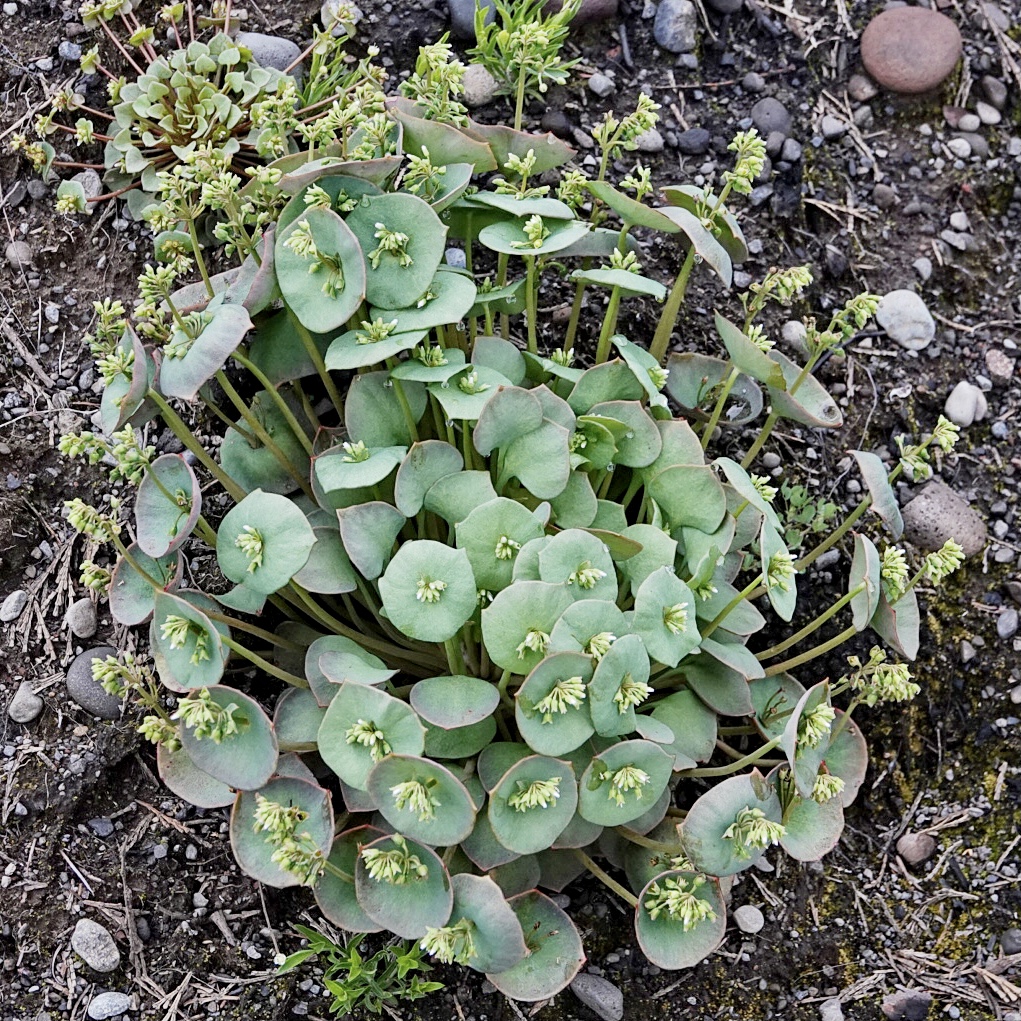
At one point in our exploration of the altered ecosystem wrought by the Holiday Farm fire, my friend Mike asked me if I knew the identity of one of the little bow-tie Claytonia plants we were seeing. Mike is a far better botanist than I, having spent his career as a vegetation scientist, and is a real whiz at identifying plants just by early leaf structure, but he is still learning the nuances of a new floral culture (though he is already far more knowledgeable than I am).
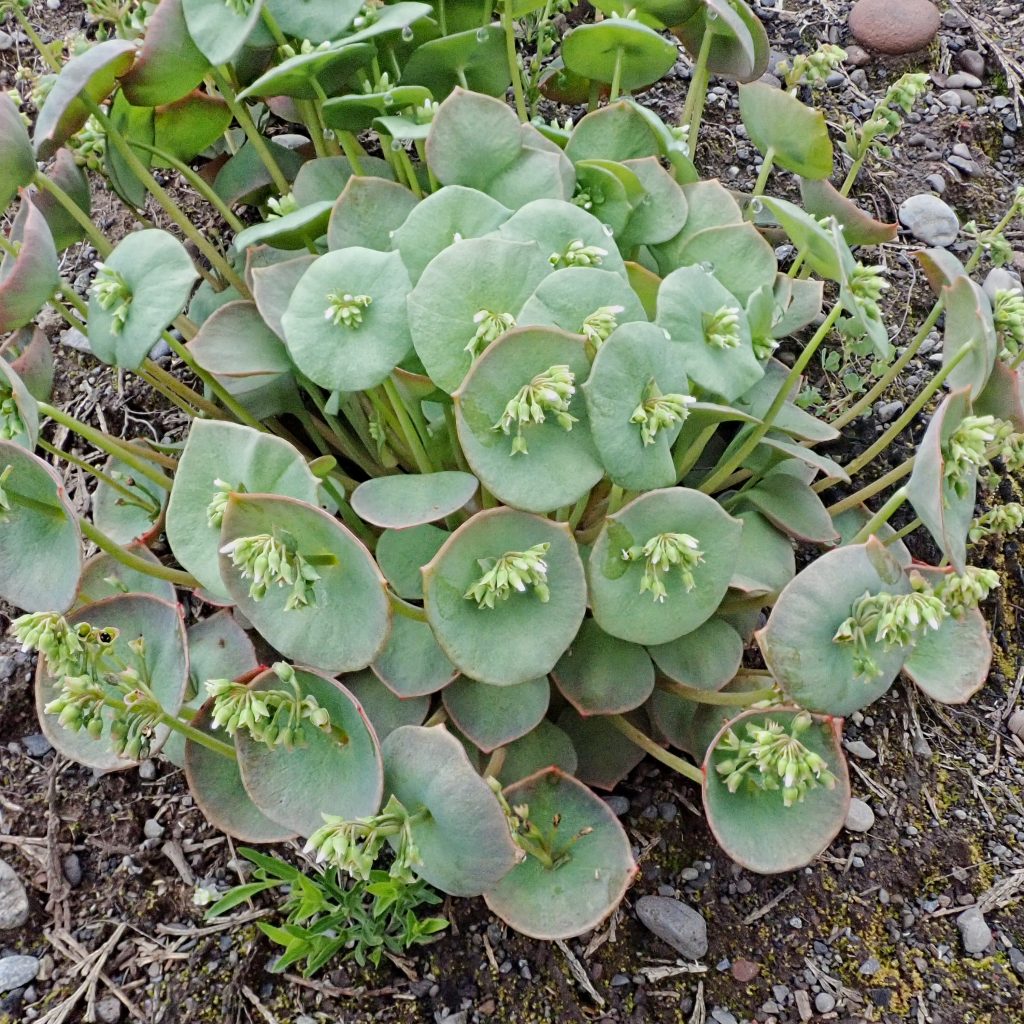
I replied that the only Claytonia I could confidently identify was Claytonia perfoliata. But we saw a lot of colonies with the fused cauline (stem) leaves that I thought of as indicative of C. perfoliata, and because it was in isolated clumps I noticed that what I’d thought of as basal leaf plasticity and/or changes brought on by age actually fell into three basic shape/size groups. I realized that, because I had been ignorant of how incomplete the original source was that I’d used to identify this, I had never explored the possibility that there might be similar species that were not in the field guide. Or possibly, because another of my early field guides was ‘Wildflowers of the PNW’ (Turner/Gustafson) and it mentions all three, I just didn’t read the whole entry. I don’t make this mistake as often nowadays, but there are a lot of misidentifications from my past that are due to a combination of these factors, and which haven’t been corrected.
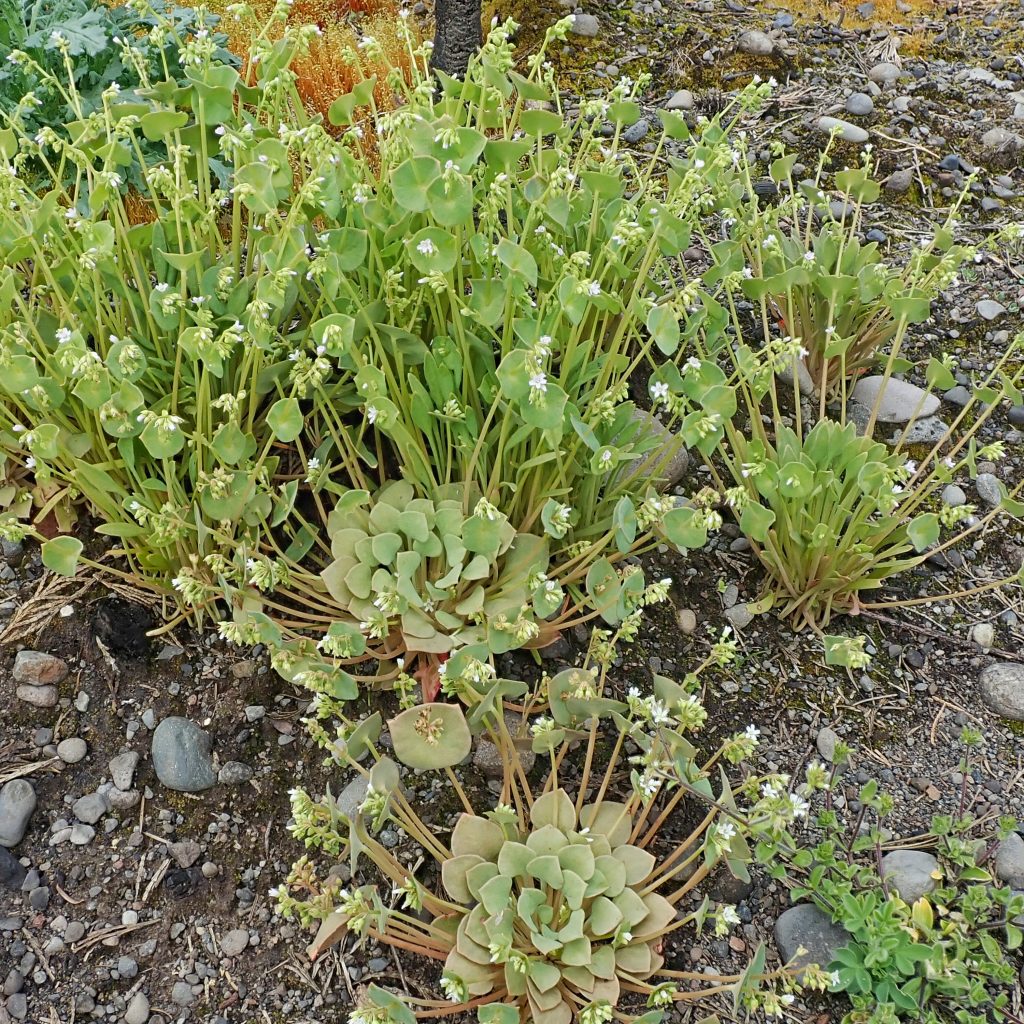
And this turned out to be one of them. As soon as I did a bit of digging I realized that there are three species that routinely have fused cauline leaves in our region. So I’m writing three linked posts (the other two are for C. parviflora and C. rubra), and the bulk of the identification information will be repeated in each one. This post will contain the edibility, ethnobotany, and herbalist uses, since most sites dealing with those usages don’t distinguish between the three.
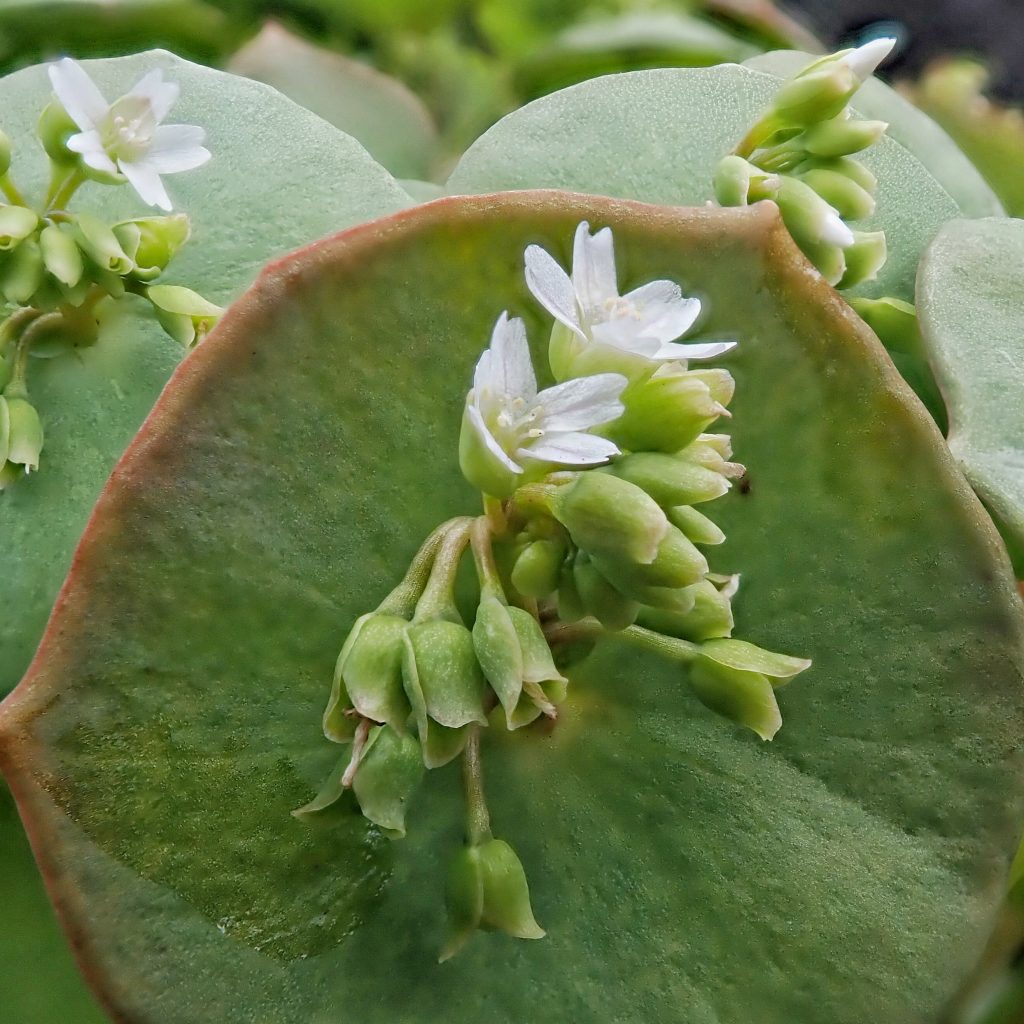
The first thing I should mention is that none of these three species always have fused cauline leaves, and that some other members of Claytonia occasionally do have fused leaves. Another thing to be aware of is that there has been movement between Claytonia and Montia in recent decades, and many older books still list all three of these species as being in Montia. According to the 2nd edition of “Flora of the Pacific Northwest“ (Hitchcock/Cronquist et al, 2018), Claytonia have flower stems with a single pair of opposite or perfoliate leaves subtending the inflorescence, and all other leaves are basal or absent. Montia, on the other hand, have a flower stem with alternate leaves, or many pairs of opposite leaves, and basal leaves are sometimes present.
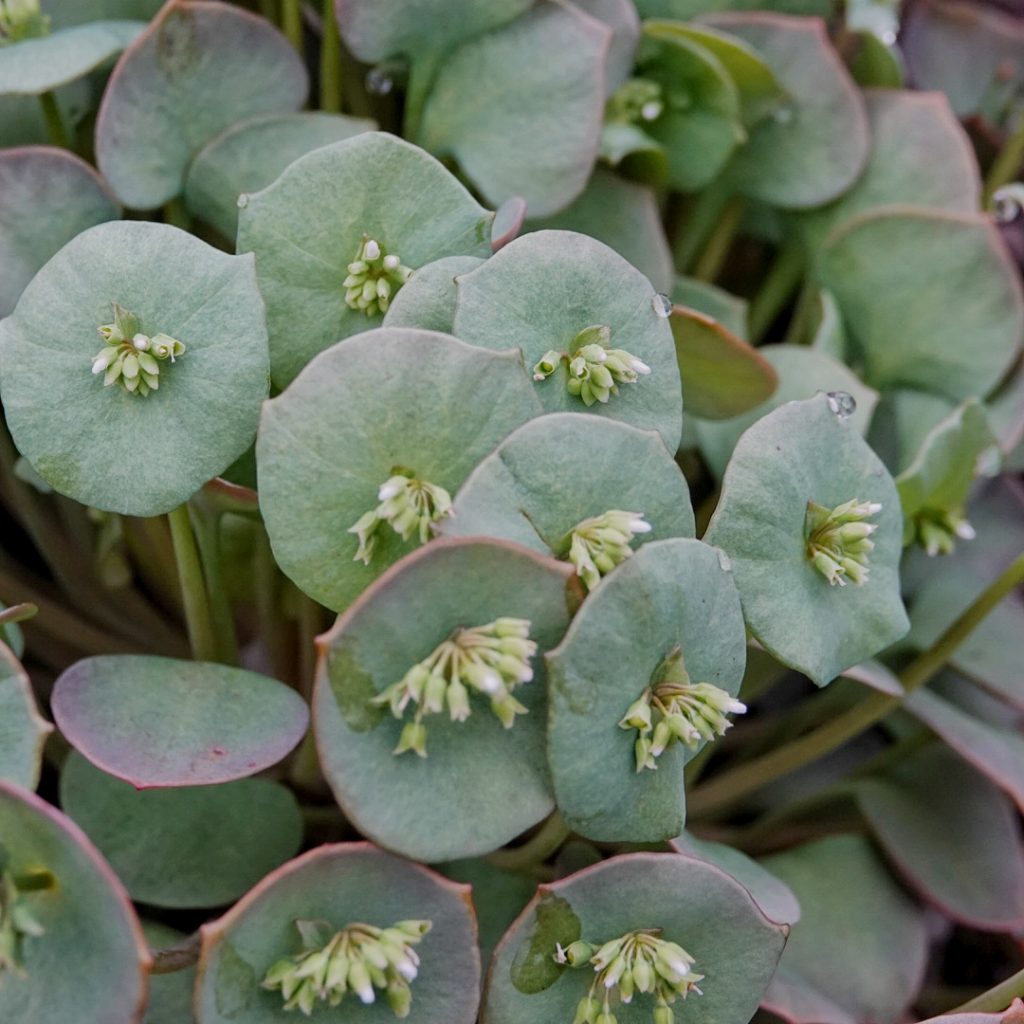
Another important point is that all three of these species exhibit a range of polyploidy (having more than two sets of chromosomes), from the normal diploid up to decaploid. Amongst other results this also leads to extreme plasticity based on environmental conditions. And there are at least two subspecies in our region for each species. So everything I say is just talking about the median average, and there will be many specimens that fall outside these ranges.
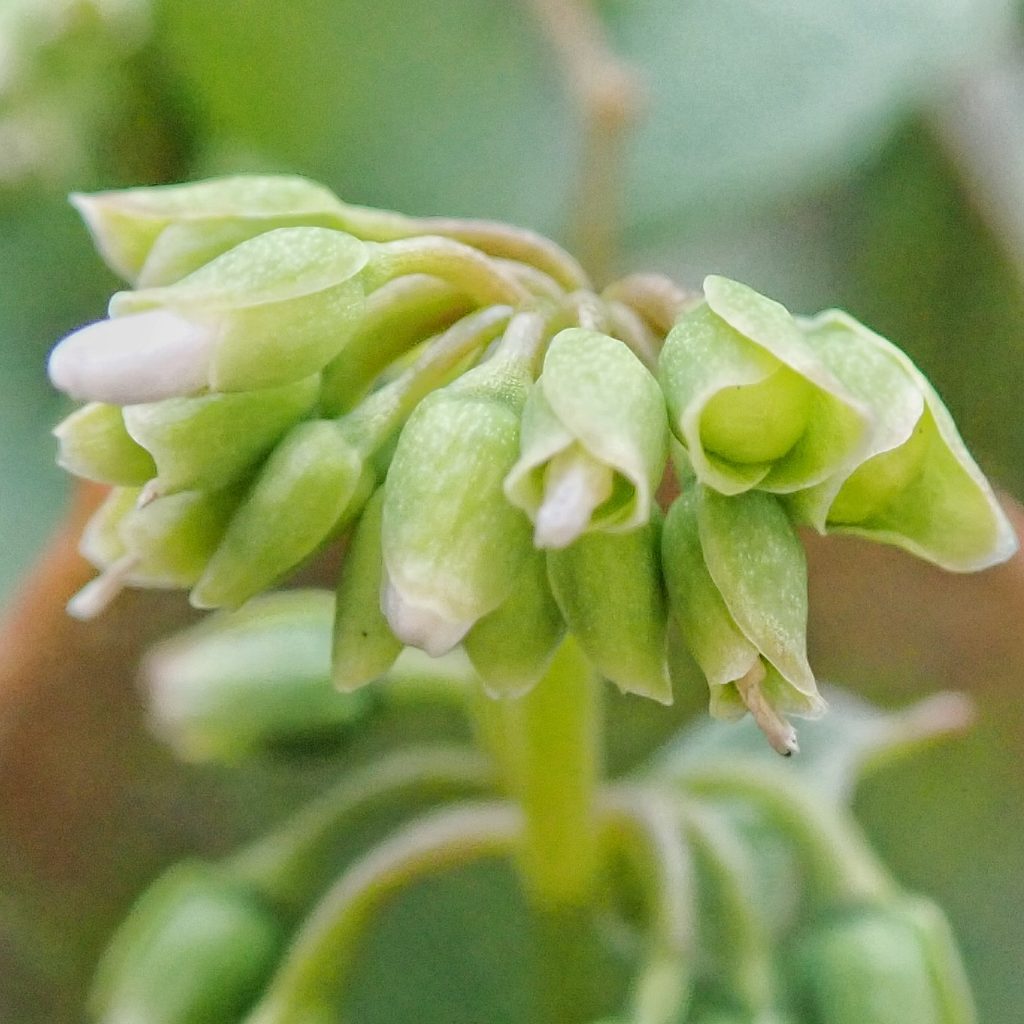
Now to attempt to clarify identification of our fused leaf Claytonia. The first thing to look for is the size and shape of the basal leaves (there is a good, if overly simplified, glossary of leaf shapes here). In C. perfoliata they are fairly large (10-70mm long by 5-60mm wide), rhombic to deltoid or reniform, with a pointed tip. The basal leaves of C. rubra are small (5-15 mm long by 5-10mm wide) and ovate to spatulate or trullate, with an obtuse apex. And the basal leaves of C. parviflora are long and narrow (up to 6” long by 5-10mm wide) and linear in shape.
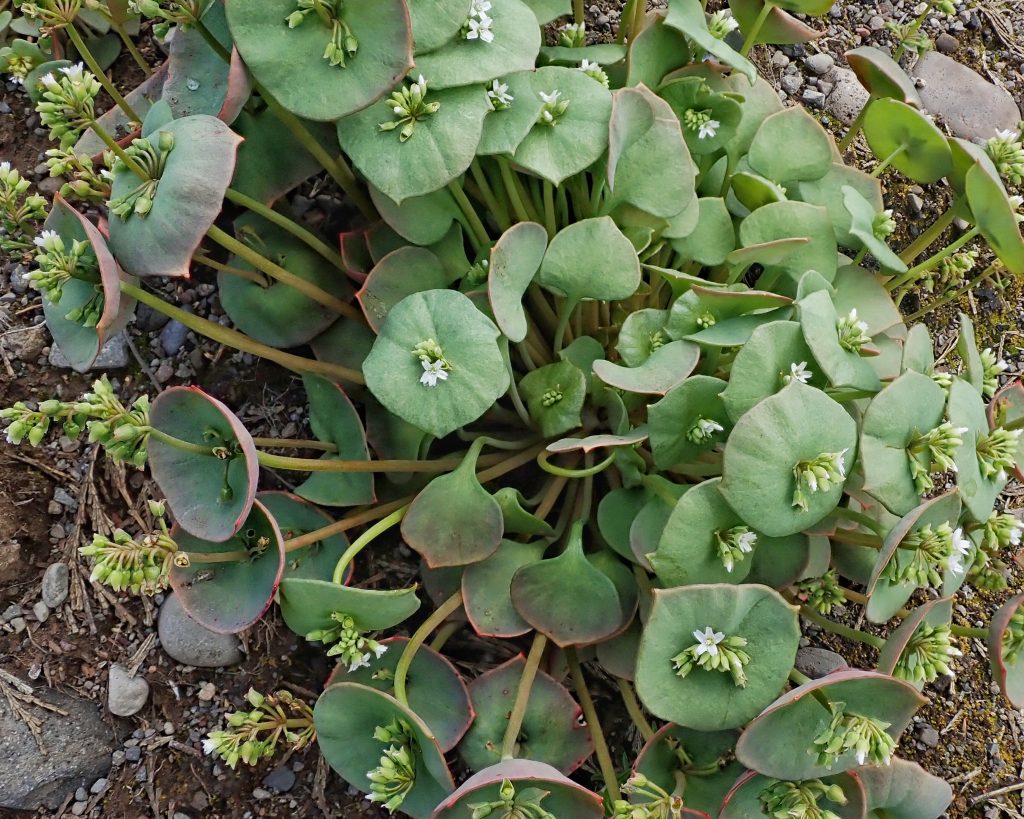
There are two characteristics one can use to distinguish between a small C. perfoliata and a large C. rubra. The stems of the basal leaves of C. perfoliata are suberect to erect, and the plants are mostly green, with only a weak reddish tinge. The stems of the basal leaves of C. rubra are flattened to suberect, and usually have red pigmentation.
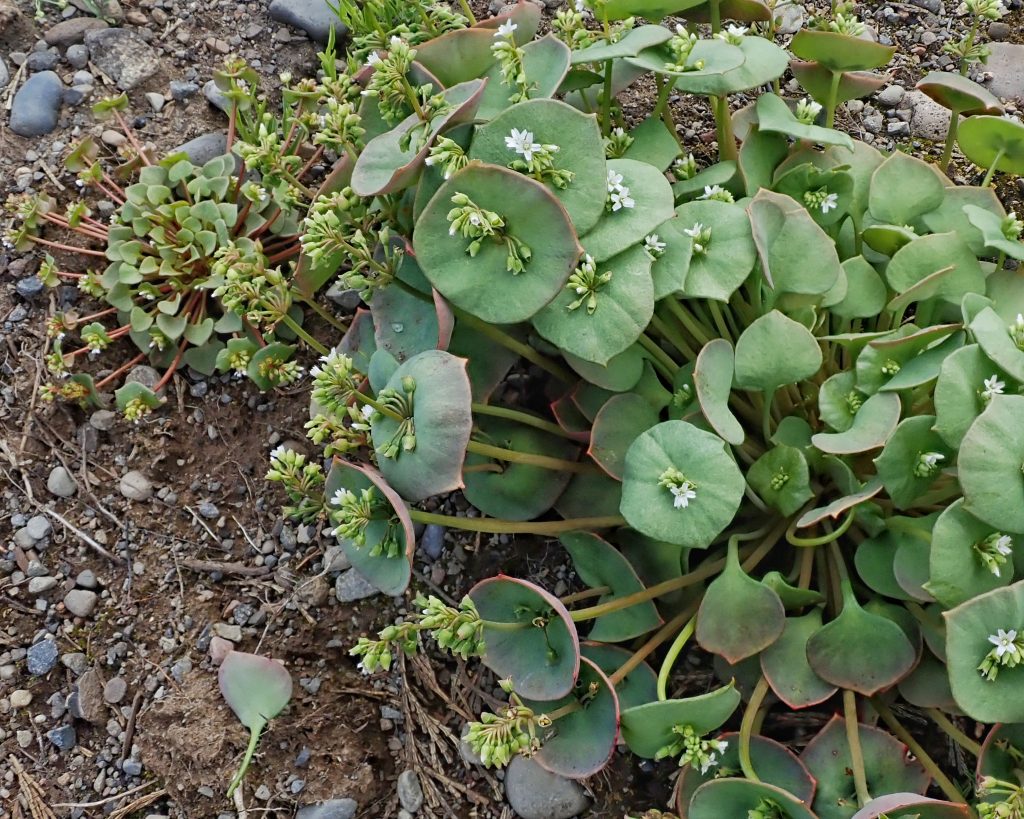
It is interesting to note that the three species have somewhat different reproductive goals. The fact that the flowers sit close to the de facto splash cups of the fused leaves leads C. perfoliata and C. rubra to often be self fertilized, while the more extended inflorescence of C. parviflora works against self fertilization. But all three manage to produce abundant seed, much of which is stored in the seedbank of the soil, and germinates soon after a disturbance such as last fall’s wildfire.
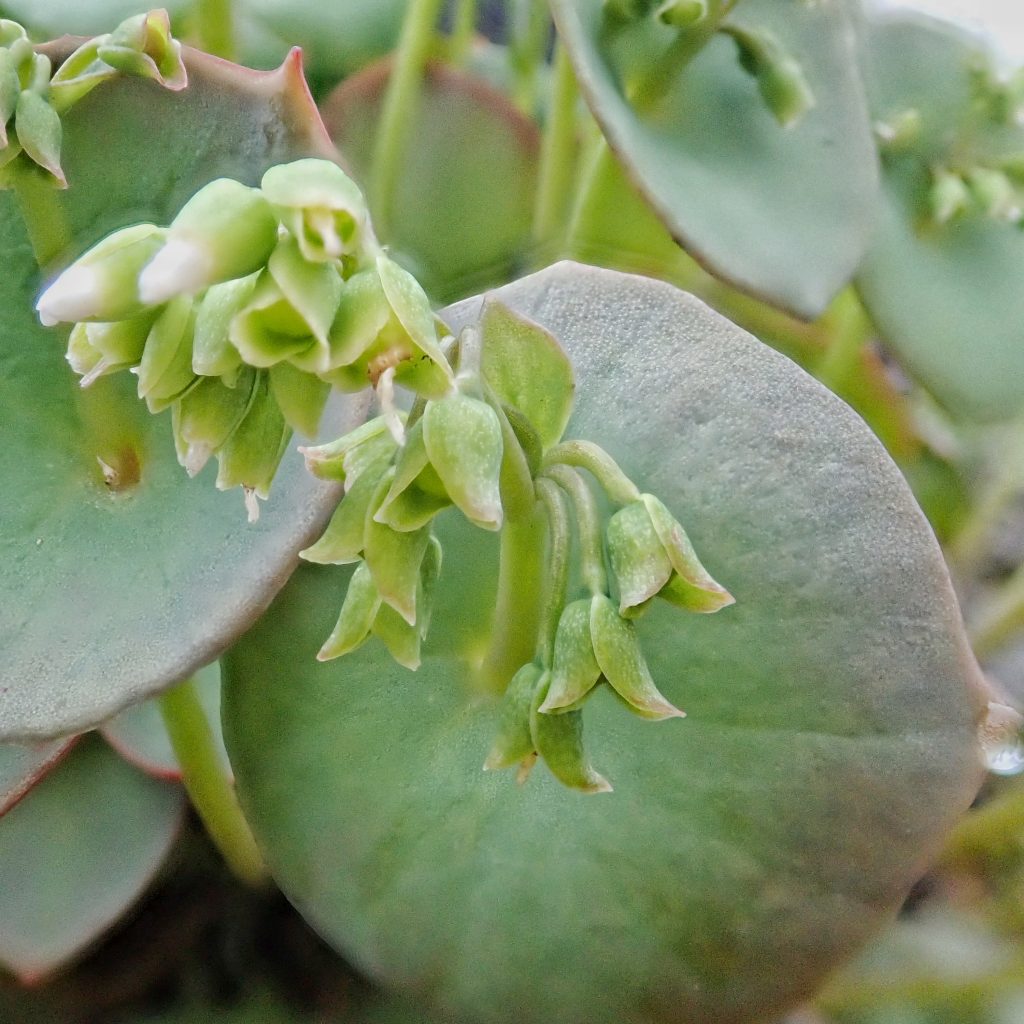
Humans have a long history of eating these species, both as boiled greens and raw, which has given rise to the common names (that seem to be applied indiscriminately to all three of these species, as well as some of the other Claytonia/Montia), of Indian lettuce and miners lettuce. Miners of the gold rush era were particularly prone to ingest these plants as a ward against scurvy. The British thought highly enough of its antiscorbutic qualities that they purposefully introduced it to Australia and Cuba. By the mid 1800s seeds were sold in Europe for garden plantings. Apparently some indigenous cultures were known to place harvested stems around anthills, so the ants would leave formic acid on them and impart a vinegary flavor.
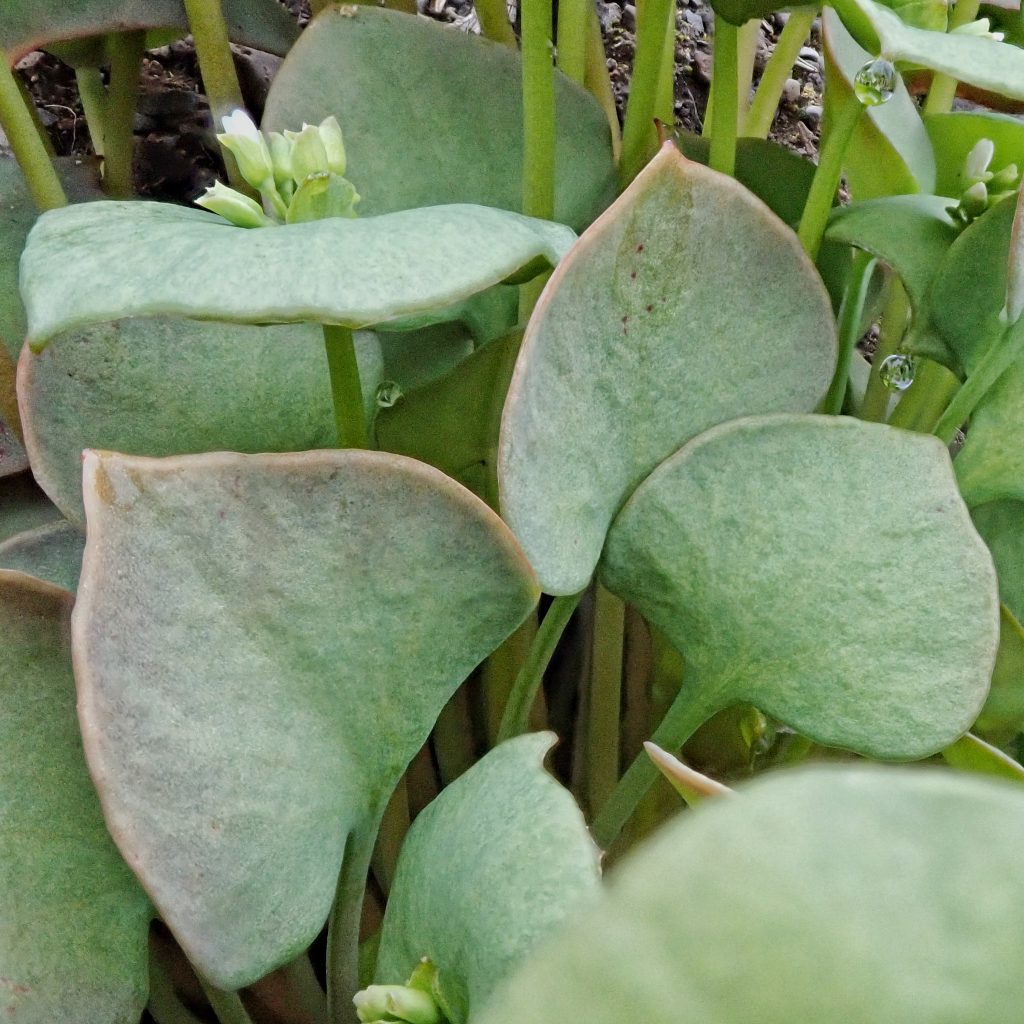
Miners lettuce has been used by herbalists to treat constipation, and the juice was drank as an appetite restorer. Crushed plants were used as a poultice for burns and minor lacerations, and to treat arthritis and rheumatism.
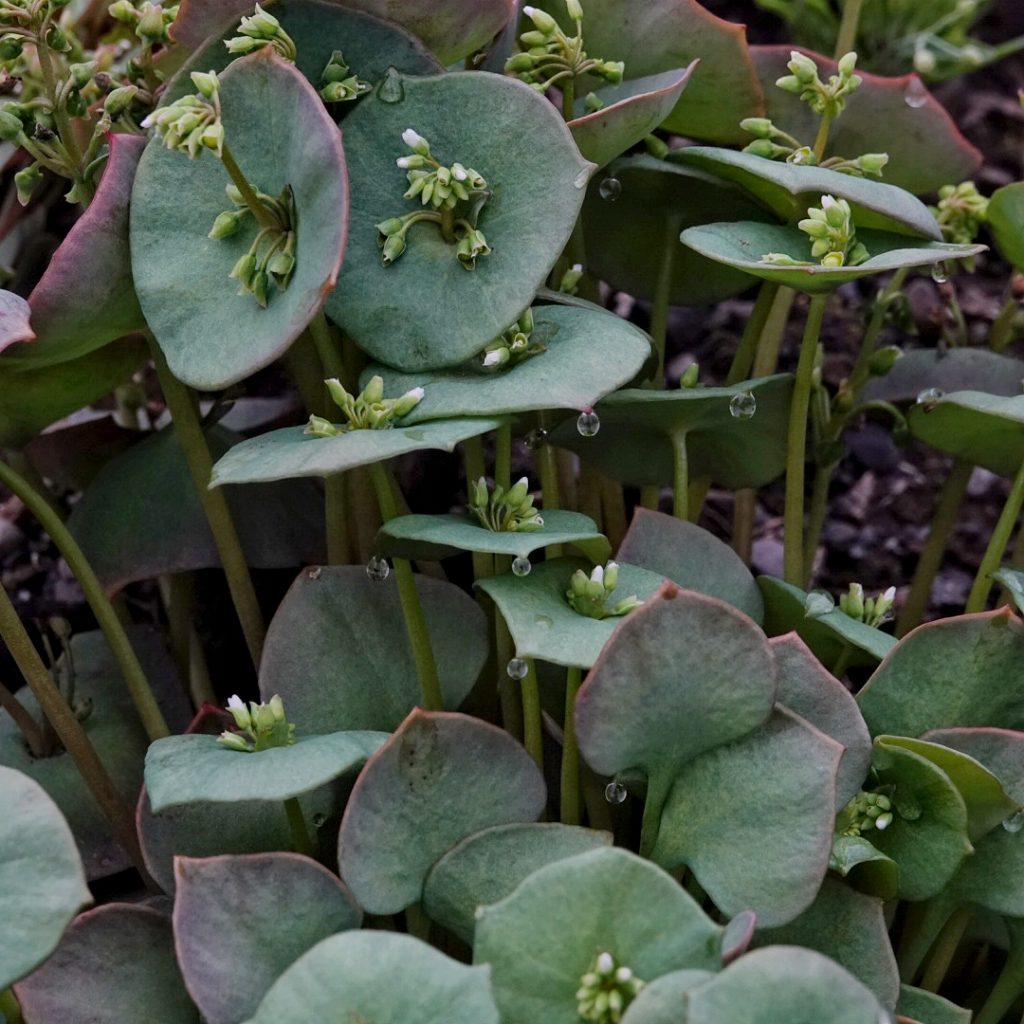
Description-Grows in clumps from a suberect to erect basal rosette of fairly large (10-70mm long by 5-60mm wide) leaves, rhombic to deltoid or reniform in shape, with a pointed tip; single pair of opposite, usually fused, stem leaves; inflorescence short, and appears to grow straight from the leaf; flowers small, light pink to white; annual
Similar species– See C. rubra and C. parviflora
Habitat-Vernally damp, open to shaded areas at low to mid elevations; often on disturbed ground.
Range– Native to western North and Central America; region wide in appropriate habitat.
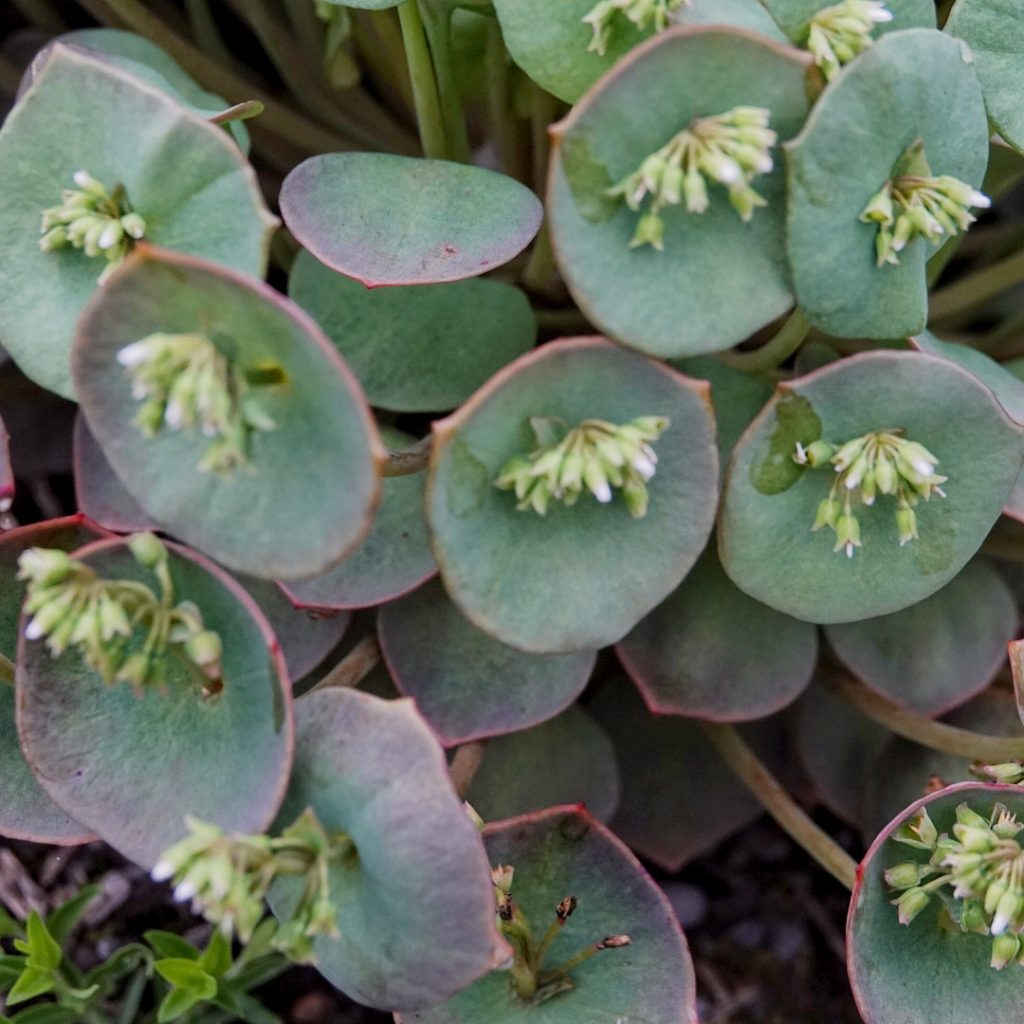
Reproductive timing-Blooms from April to July
Eaten by-Larval host for the moths Annaphila diva, A. arvalis, and Enchoria lacteata ; valuable early season nectar and pollen source for various pollinators; Gastropoda and most grazing animals feed on these plants; Mourning Doves, meadowlarks, and other birds feed on the seeds.
Etymology of names–Claytonia honors John Clayton (1694-1773), a lawyer and botanist in colonial Virginia. The specific epithet perfoliata is from Latin and translates roughly as ‘perforated leaf’, a reference to the appearance of the stem perforating the fused leaves.
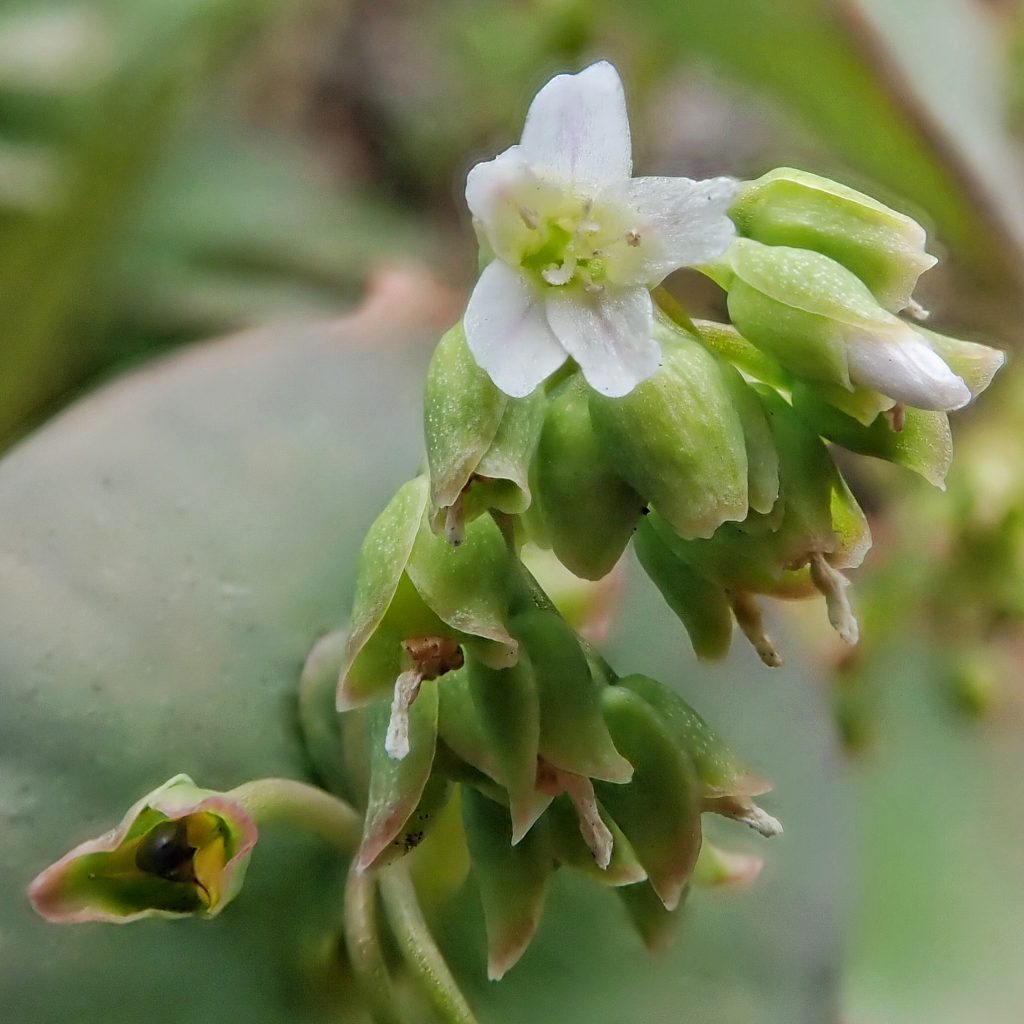
https://pfaf.org/user/plant.aspx?LatinName=Claytonia+perfoliata
Claytonia perfoliata | Miner’s Lettuce | Wildflowers of the Pacific Northwest
https://www.jstor.org/stable/2418301
http://www.efloras.org/florataxon.aspx?flora_id=1&taxon_id=242415745
https://ethnobotany.csusm.edu/search_details.php?plant_id=415
https://en.m.wikipedia.org/wiki/Glossary_of_leaf_morphology
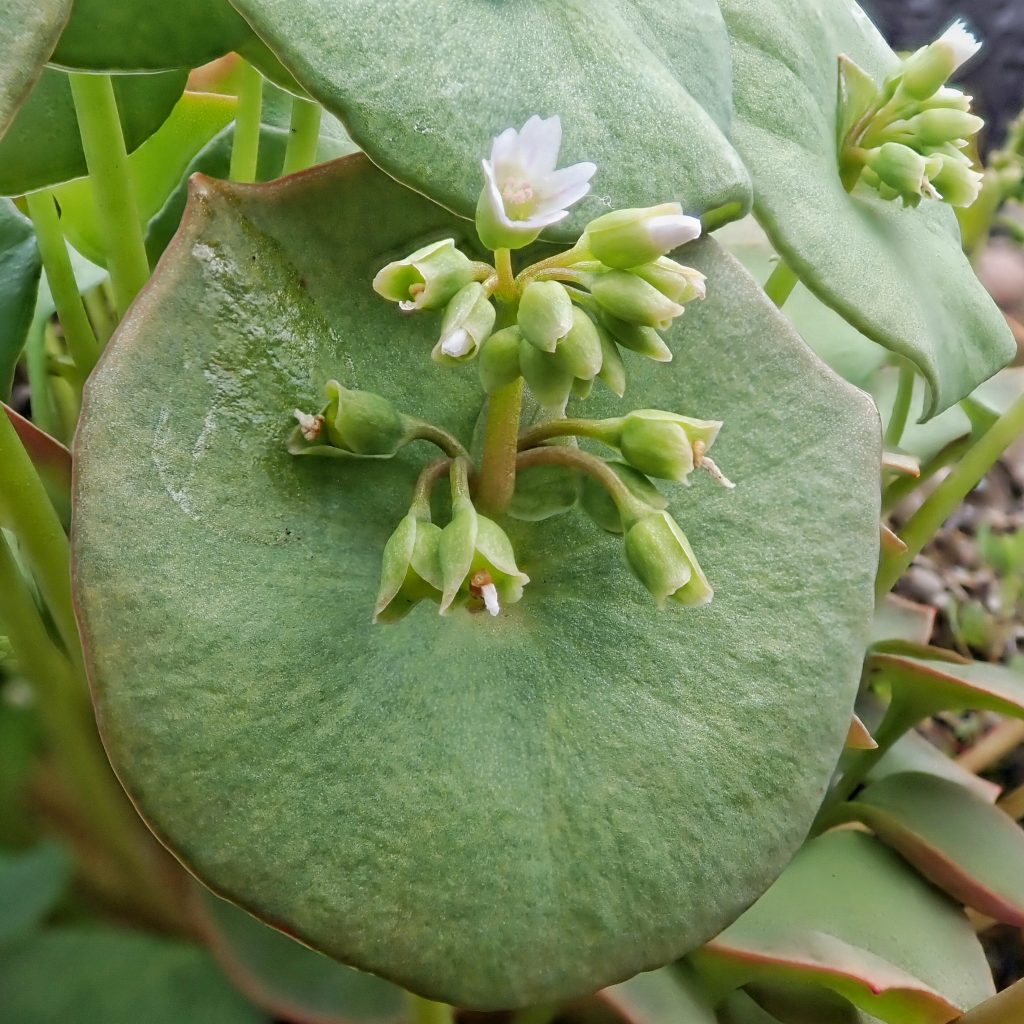
3 thoughts on “Claytonia perfoliata”